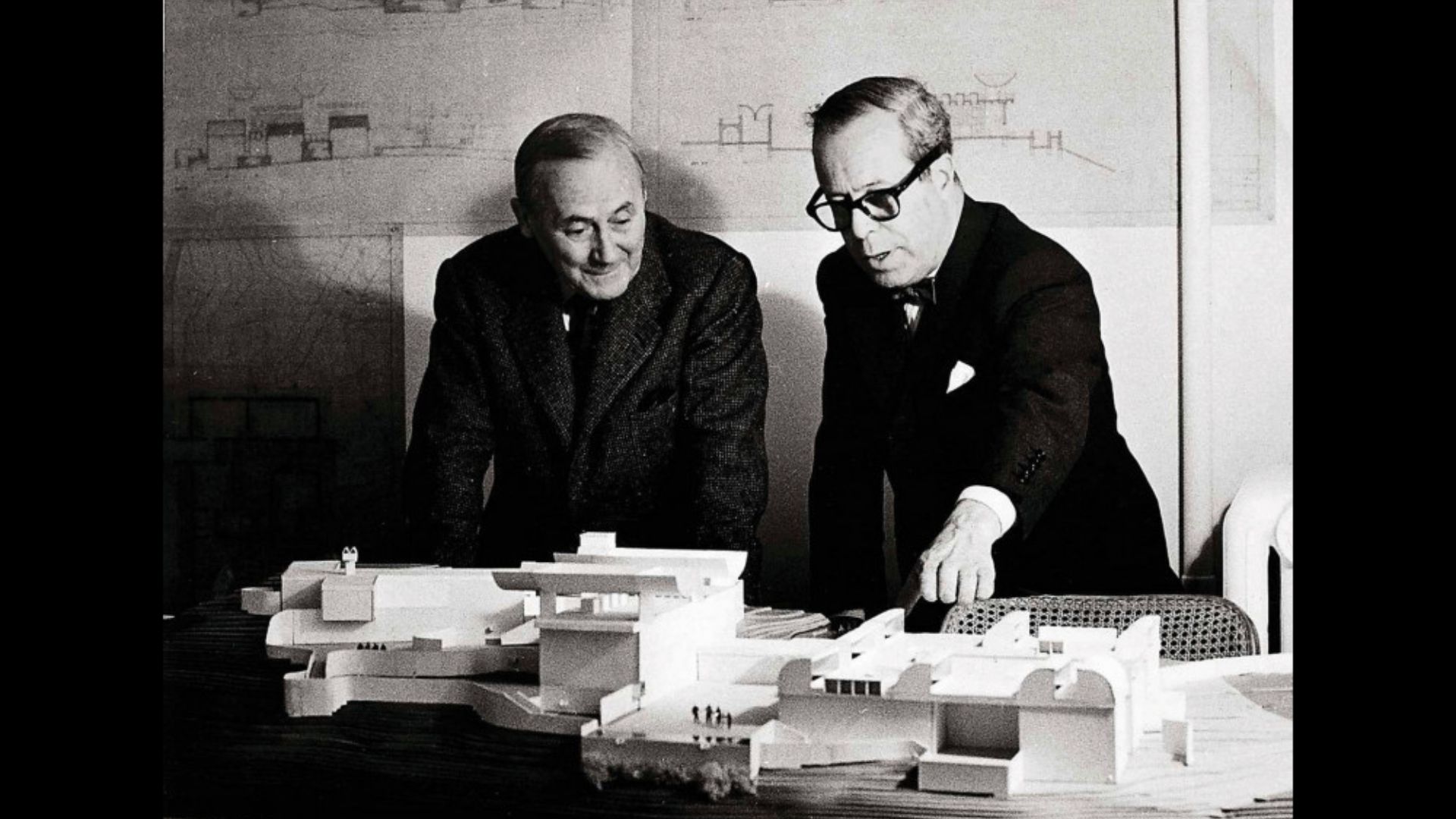
1. Robert Venturi (1925-2016)
To begin with, considered the “Godfather of Postmodernism,” Robert Venturi is a giant in the field. He famously challenged the modernist notion of “less is more” with his book “Learning from Las Vegas,” advocating for an architecture that embraced complexity, ornament, and symbolism. Moreover, Venturi’s playful designs, like the Vanna Venturi House in Pennsylvania, often incorporate historical references with a modern twist.
2. Charles Moore (1925-1993)
Charles Moore was a key figure in shaping the user-centred approach of postmodern architecture. Furthermore, he believed buildings should be engaging and responsive to the needs of the people who use them. Moore’s Piazza d’Italia in New Orleans is a prime example, featuring playful elements like a giant red apple fountain and a colourful tripartite design that invites exploration and interaction.
3. Michael Graves (1934-2019)
Michael Graves’s postmodern designs are known for their bold colours, playful shapes, and oversized elements. The Portland Building in Oregon, designed by Graves, is a vibrant landmark with a colourful facade featuring oversized columns and keystones, drawing inspiration from classical architecture with a modern, whimsical touch.
4. Philip Johnson (1906-2005)
Philip Johnson’s architectural journey is fascinating. Initially a leading modernist architect (think the iconic Glass House), Johnson later embraced postmodernism. His AT&T Building in New York City, with its Chippendale-inspired top, is a striking example of this shift. Furthermore, the building challenged the dominance of the glass-and-steel skyscraper aesthetic and sparked conversations about the role of historical references in contemporary architecture.
5. Frank Gehry (born 1928)
Frank Gehry’s visionary approach to architecture often falls under the deconstructivist umbrella, a branch of postmodernism. His buildings, like the Walt Disney Concert Hall in Los Angeles, are characterized by a fragmented and seemingly chaotic exterior, challenging traditional notions of form and function. While visually striking, Gehry’s designs also spark discussions about the balance between aesthetics and practicality.
6. Charles Jencks (1939-2017)
Charles Jencks was a prominent architectural critic and theorist, who also dabbled in design. He coined the term “postmodern architecture” and championed the movement’s playful embrace of historical references and symbolism. The Welsh National Opera House in Cardiff, designed by Jencks, is a striking example, featuring a postmodern interpretation of a traditional opera house with a curved glass facade and a slate roof.
7. Aldo Rossi (1931-1997)
The works of Italian architect Aldo Rossi are known for their poetic quality and focus on collective memory. Additionally, he believed architecture should evoke a sense of timelessness and connect to the past. Rossi’s postmodern designs often feature simple geometric shapes and muted colours, creating a sense of quiet dignity and historical reference.
8. Terry Farrell (born 1938)
British architect Terry Farrell is known for his contextual approach to design. Additionally, he emphasizes the importance of a building’s relationship to its surroundings and the needs of the local community. Farrell’s postmodern designs, like the MI6 Building in London, incorporate elements that echo the surrounding architecture while maintaining a distinctly modern identity.
9. Cesar Pelli (1926-2019)
Cesar Pelli, like Philip Johnson, had a career that spanned both modernism and postmodernism. His postmodern designs, like the Petronas Twin Towers in Kuala Lumpur, Malaysia, embraced soaring heights and striking forms, becoming iconic landmarks in their respective cities.
10. James Stirling (1926-1992)
James Stirling was a British architect known for his bold and often controversial designs. His early works drew inspiration from the Brutalist movement, characterized by raw concrete and geometric forms. However, Stirling later incorporated more playful elements and historical references into his postmodern designs. Moreover, the Staatsgalerie Stuttgart in Germany, designed by Stirling, is a fascinating example, featuring a red sandstone facade with a mix of curved and angular forms, creating a visually striking and thought-provoking landmark.
Conclusion
In conclusion, these 10 Revolutionary Postmodern Architects along with many others, played a crucial role in shaping the postmodern architectural movement. Additionally, their designs challenged the dominance of modernist aesthetics, injected a dose of fun and personality into the built environment, and placed a greater emphasis on user experience and historical context. While postmodernism itself may not be the dominant architectural style today, its influence continues to resonate in contemporary architecture, reminding us that buildings can be not just functional spaces, but also playful expressions of human creativity and cultural connection.

